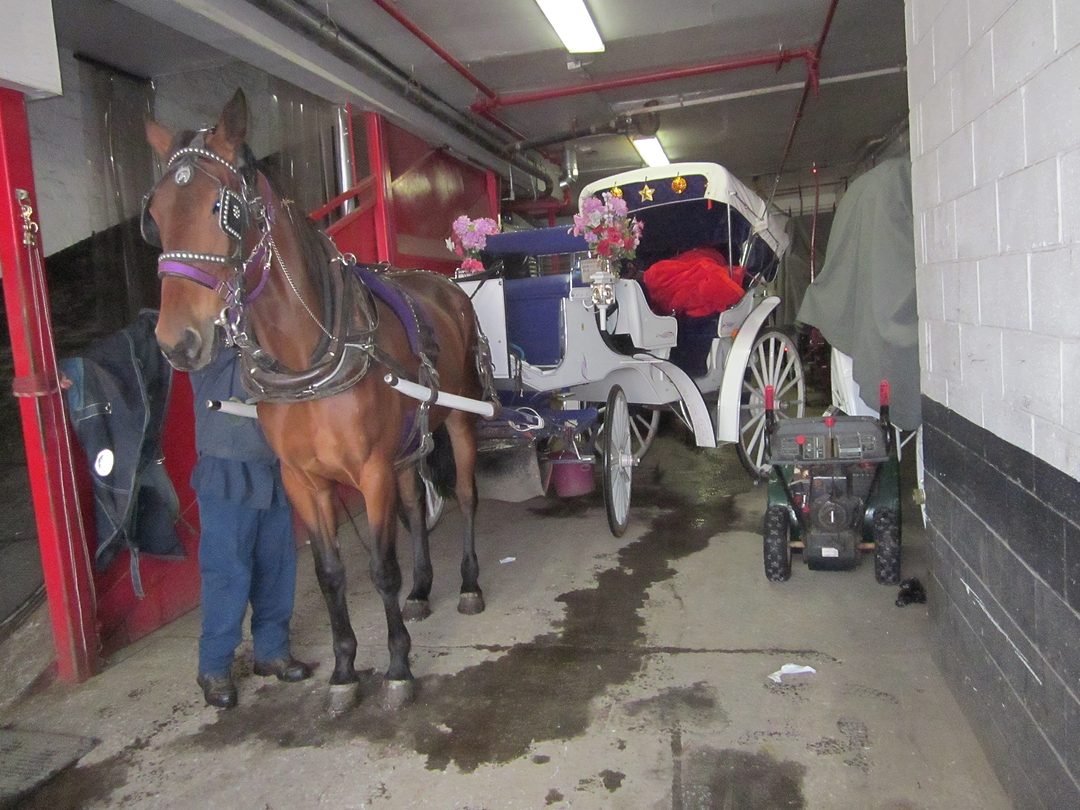Pictured Above: A New York City carriage horse is ready to begin its day providing rides in Central Park to tourists.
The Central Park horse carriage industry will survive, albeit with significantly reduced numbers under a deal that was announced late Sunday.
The carriage horses must be reduced from the current 220 to 110 by December, and another 15 must be retired by Oct. 1, 2018, when new stables are built by the city in Central Park. Twenty additional horses will be rotated in and out of service to allow them rest.
“We are pleased to have reached an agreement in concept on the future of New York’s horse carriage industry,” according to a group statement signed by New York City Mayor Bill de Blasio, New York City Council Speaker Melissa Mark-Viverito, Teamsters Joint Council 16 President George Miranda and carriage driver Steve Malone. “We look forward to working together on the final details of this legislation and getting this passed.”
Beginning in June, the deal bans carriage horses from the streets outside Central Park, except when traveling to and from the current stables. The city has agreed to set up stands inside the park that will replace passenger loading places on the streets outside the park.
The deal also reduces the hours that a horse can work to 9; allows drivers to increase prices by $5 for rides after 6 p.m. from Nov. 15 to Jan. 16, as well as on Valentine’s Day and Easter; horses that are not working will be moved to a facility outside the city; and pedicabs will be prohibited from the park south of 85th Street.
The City Council must approve the deal.
The agreement comes more than 3 years after de Blasio vowed while campaigning for office to “quickly and aggressively move to make horse carriages no longer a part of the landscape in New York City. They’re not humane.”
De Blasio enjoyed significant financial and electoral support from New Yorkers for Clean Livable and Safe Streets (NYCLASS), which claimed the horses are abused. Those claims fly in the face of observations and examinations from a number of equine veterinarians and organizations such as the American Association of Equine Practitioners (AAEP), American Veterinary Society, the New York State Veterinary Medical Society, Dr. Sarah Ralston and International Equine Veterinarian Hall Of Fame members Dr. Harry Werner and Dr. Stephen O’Grady.
“I had my eyes open for any and all problems,” Werner told American Farriers Journal. “I was pleasantly surprised not to see them.”
O’Grady applauded the horses’ living conditions and the care they receive.
“The farriery on the horses was very, very good,” says O’Grady, who was a farrier for 10 years before earning his veterinary medicine degree and maintains a practice devoted to therapeutic farriery. “One of the biggest things that keep these horses sound is what you do with their footcare. We made some recommendations that were carried out straight away, and in a very good manner.”
The agreement will have a economic trickle down effect on those who depend on the carriage industry — stable hands, feed vendors, vets and farriers.
It’s too early to determine what the deal will mean for Lancaster County, Pa., farrier Aaron Hoover, who cares for about 40% of the carriage horses at three stables.
“I’ll pretty much be between a rock and a hard place,” he said in March 2014. “I guess I’ll have to find customers around my home.”









Post a comment
Report Abusive Comment